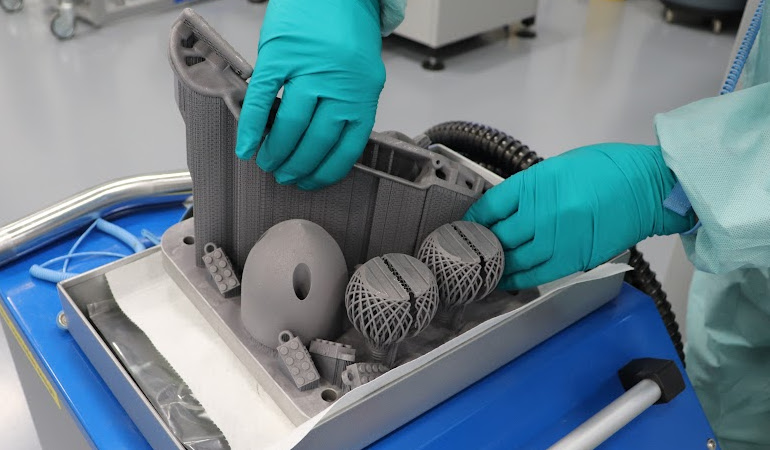Much as a laser cutter or turret punch programmer will nest various parts and jobs on a metal sheet, so will an AM technician nest parts on the printer’s build platform in the horizontal plane, as well as vertically if the geometry permits. A typical print job includes parts of different sizes, shapes, and delivery priorities. A group of marble-size widgets, for example, might be contained within a disposable bounding box that is printed at the same time. Larger parts are fitted around and above the box in Jenga fashion until the chamber has been filled; each part is oriented and spaced to ensure uniform heat dispersal during the build. Build software also supports the creation of serialization and part identification, both for quality control purposes and to make parts easier to find when “breaking the cake” upon completion of the print job.
Nesting and orientation are often the most critical for success, however, especially with powder bed fusion processes.
“If a part’s going to be machined after 3D printing, for example, KAM often adds material to the build to facilitate its being held securely on the machine tool. That means a trip to one of our CAD systems. From there, we do whatever nesting, support building, and lattice generation are needed, followed by slicing and build processing. Each of these might require a different software package.” Michael Mullen, Engineer Manager, KAM
To read the full article, check out The Additive Report.
